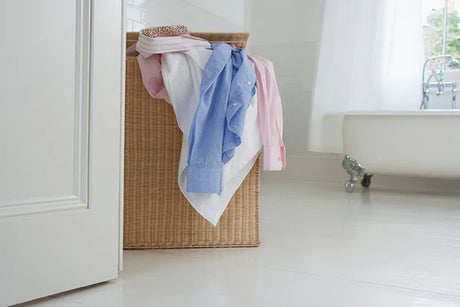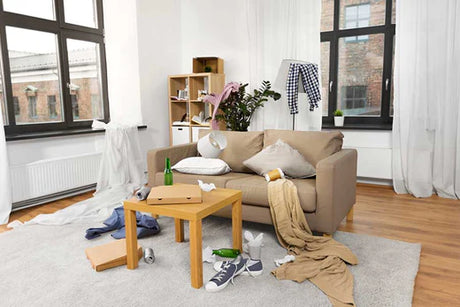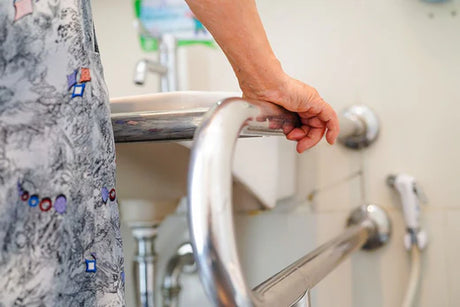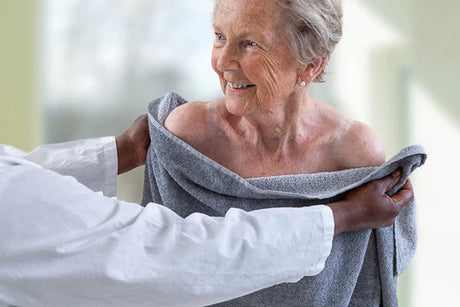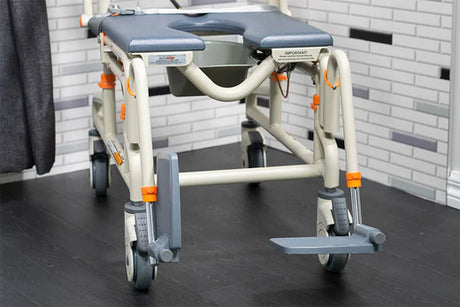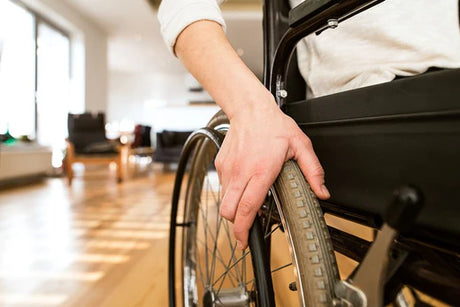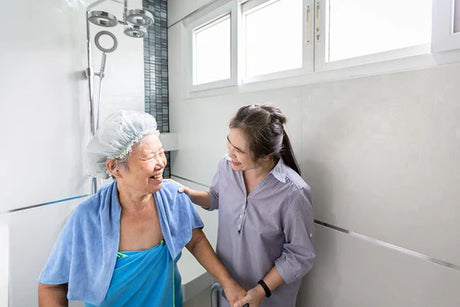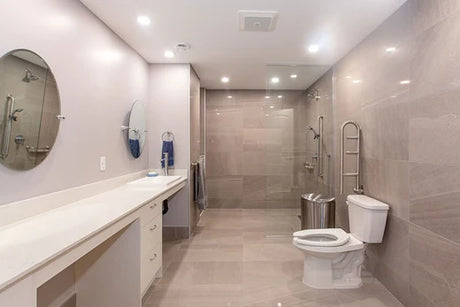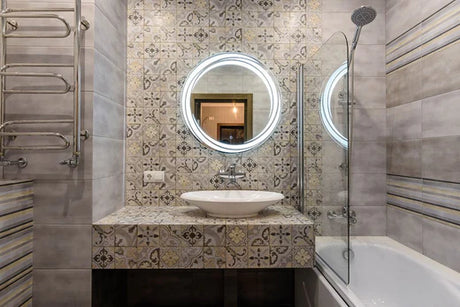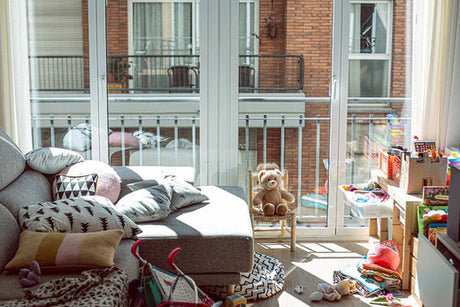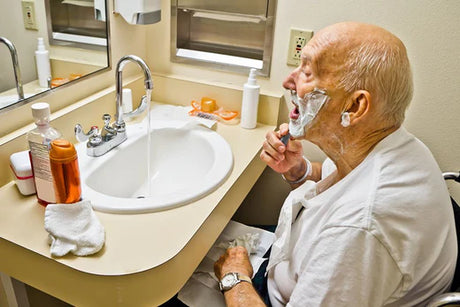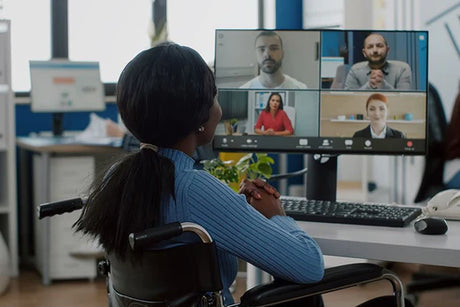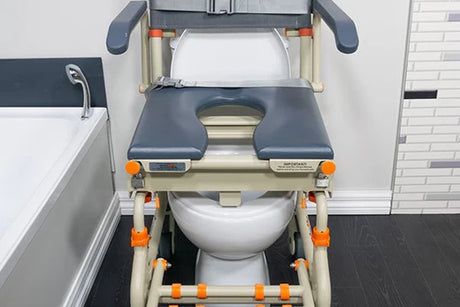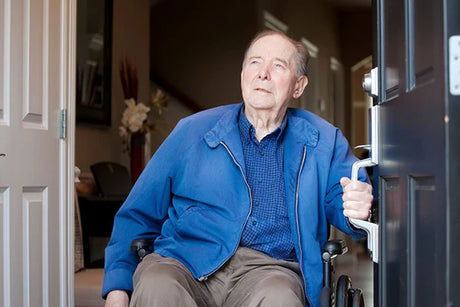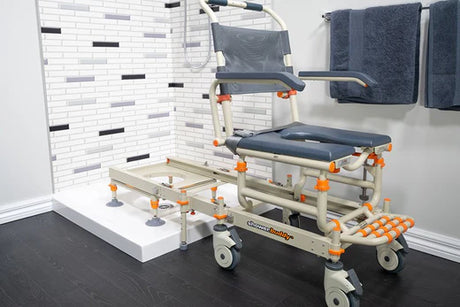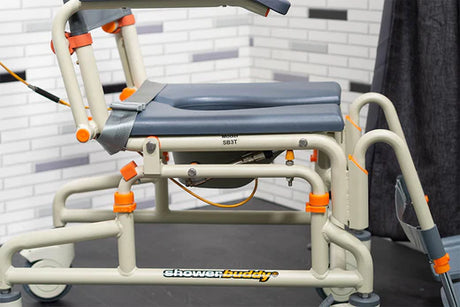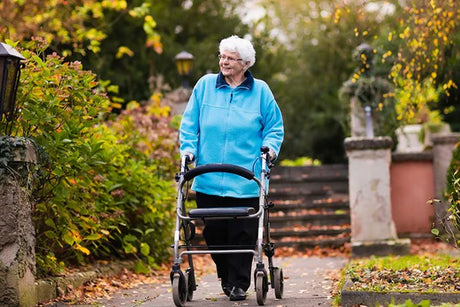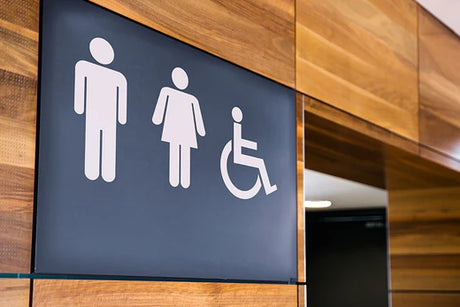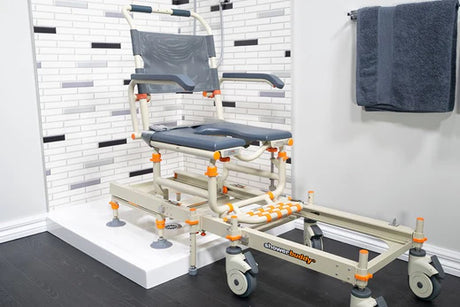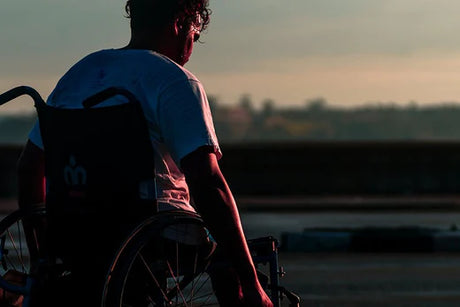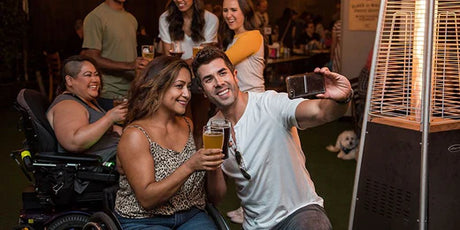For anyone who hasn’t experienced a disability or injury – either personally or first hand, Occupational Therapy might be something you’ve heard of, but don’t necessarily know much about. At Showerbuddy, we engage with Occupational Therapists regularly, supporting them to help their clients.
The Showerbuddy team and the global community of OTs work together each day and so we decided to shed light on this area of health for anyone who may be encountering the field for the first time.
What does occupational therapy mean?
Occupational therapy is a practice that focuses on enabling an individual to participate in everyday activities and ‘occupations’ for their own well-being.
An occupational therapy professional will craft a programme for an individual who is experiencing loss of movement or independence, using equipment, practices and support. In many ways, occupational therapy is about ensuring that physically or mentally disadvantaged people can enjoy everyday living as much as possible like anyone else.
What’s considered meaningful daily activity can vary depending on the individual. But for many, ‘meaningful’ goes beyond the basics and includes the ability to continue hobbies or social interactions. There is also a strong focus on safety to ensure the individual is not put at risk.
What’s the difference between an Occupational Therapist and a Physiotherapist?
These are two areas that do have a lot to do with each other. However, the jobs and disciplines are fundamentally different. An OT will largely be focused on bringing improvement to a person’s daily activities, often using support people, a plan and equipment. Physiotherapy on the other hand is focused more on the actual movement and function of the human body.
As you’d imagine, the two have plenty of overlap and commonly both make up parts of a broader rehabilitation or support programme.
As Healthline suggests, there are many similarities – most notably in their mission – to bring better quality of everyday life to the individual.
Whether you or your loved one has an OT or PT (or both) will depend on specific circumstances and needs.
How does Occupational Therapy help me or my loved ones?
So what’s actually involved in occupational therapy? How does it help?
There’s a process that OTs go through to decide what help is actually needed. Typically the first interaction is identifying the difficulties the person faces, and gaining a comprehensive understanding of their conditions and disabilities.
An activity could be difficult due to physical challenges like lack of strength or coordination. In other cases mental restrictions like memory loss or poor organisational skills will need to be overcome. Sometimes experiences of mental illness can cause barriers to carrying out everyday meaningful activities too.

An OT will build a plan around these restrictions a person has, and becomes a central point for organising the equipment and other support they need.
Showerbuddy, who provide bathroom mobility solutions, is an example of an equipment provider an OT will work with. In fact, the discussions we have with our Occupational Therapist community extends beyond equipment orders and into problem solving based on unique needs. For some users, Showerbuddy and OTs will need to custom build a solution to fit a bathroom size or use specific accessories to make bathroom activities as comfortable as possible.
An OT will also build in a daily and weekly plan for the individual which is designed to bring some normality to ‘everyday life’.
Let’s look at what this might involve.
Activities that can be difficult for people
It’s not until we stop and think or are faced with a disability that we realise just how varied the number of activities are in the typical day.
The physical and mental exertion involved in these becomes a large obstacle for many individuals and an OT is there to help navigate these easier.
Typical activities that can be difficult include:
- Preparing and eating meals
- Driving, transport and mobility
- Recreation and exercise
- Use of a computer or workstation
- Showering or bathing
- Using the toilet
- Getting things done on time
- Keeping the home clean and nicely presented
- Interacting with children
- Hobbies
- Confidence to face the day
- Social outings
- Developing supportive relationships/friendships
This is but a short list of hundreds of activities someone might consider part of their day. OTs will build all of this into their plan and where practical, provide support for these.

What does the Occupational Therapist provide to people?
Much like the daily activities vary depending on the individual, the support an OT provides does too. It’s important that OTs build trust with their clients to make sure they’re getting the right mix of support.
Here’s some ways OTs help people:
- Help people learn new ways of doing things following illness or injury, for example dressing themselves or cooking meals.
- Adapt material or equipment, for example recommending wheelchairs or providing special bath, shower or toilet support.
- Make changes to the living or working environment to help them undertake their usual occupations.
- Develop new skills, abilities or interests, for example job-readiness programmes
- Access ways to manage pain so people can still do the things they want.
- Assist people to feel better about themselves and what they do.
- Develop their confidence in social situations.
Occupational Therapy Equipment
A big part of occupational therapy is the use of purpose-built equipment that offers individuals support to carry out activities.
Common equipment categories include bathing, exercising and toileting. While this is common for elderly, many young people also benefit from OT products like walkers, rails, and wedges.
Let’s look at a few typical product areas you might encounter in the field of occupational therapy:
Positioning Equipment
There are certain daily occupations that require people to maintain a certain body position for an extended period of time. For these needs, OTs may use positioning equipment like a massage chair to keep a patient’s body firmly secured while a massage therapist works their muscles. In another scenario, the patient might need a special cushion called a knee elevator; a triangular piece of foam usually that props knees up. These are often used to prevent nerves becoming pinched, help poor circulation or relieve pressure on the lower back.
Wedges are similar to knee elevators but they have a more gradual incline. They work well as pillows and help keep a patient’s neck at a slight angle. A wedge can help patients sleep on an incline to support ease of breathing.
Rehabilitation Equipment
Here’s where that overlap between OT and PT can often occur. Patients who are being rehabilitated back to pre-injury (or illness) function will need support in both carrying out tasks and using their bodies to do so.
Equipment plays a part here, with products that support at each stage of rehab. These include sinus systems, irrigators and customised exercise equipment such as weighted medicine balls. A sinus system and irrigator can cleanse a person’s clogged sinus passages, while special exercise equipment will be used to develop muscle strength that enables occupation – arm movement and hand grip strength are common examples of this.
Bathing Equipment
The ability to take a bath or shower is something many take for granted. But in the case of a disabled person, this everyday task is anything but simple. Some cannot stand up to shower or sit down in the bottom of the bathtub, and need some help such as that from a carer or specialty equipment. In some homes, a bathroom might be completely built or renovated to have aids like rails, grip bars, anti slip flooring and lifts.
Showerbuddy provides shower and bath transfer systems that require no remodelling to a bathroom at all, and enable mobility for even small bathrooms. It’s why more OTs are choosing to work with Showerbuddy for their clients – users can be showering within an hour of set up.
Toilet Equipment
In what’s perhaps the most private of all daily activities, OT’s will use equipment to bring individuals back some dignity when using the toilet. Some common equipment an OT will use includes raised toilet seats that enable use without a full bend down to help those with back problems. Showerbuddy’s own systems work as toilet mobility solutions, too, meaning that the whole bathroom routine requires less heavy lifting by carers and less strain on the user.
Mobility Equipment
Getting from place to place is usually part of the OTs plan for patients, with equipment used depending on the level of the individual’s mobility.
Typical mobility equipment includes walkers, canes and power scooters. Walkers are good for patients suffering from poor balance or stability issues. Canes will be used for less severe leg problems or in the final stages of an injury rehabilitation.
A power mobility scooter with a seat are popular with the elderly but also for injured, paralysed or otherwise incapacitated patients. This solution puts more control back in the hands of the patient and allows things like shopping outings and fresh air much more enjoyable.
Where do I find an OT for me or my loved one?
Finding an Occupational Therapist can happen a number of ways. Often an OT will be referred to you by another health provider such as hospital or GP.
Otherwise individuals or their family can find local OTs using online directories like Occupational Therapy Australia.
Bathroom independence – a core function of OT
Bathroom independence is maybe the most important of all the daily occupations. We believe everyone has a right to dignity in the bathroom. Showerbuddy’s range of solutions provide bathroom mobility for both solo and carer applications.
If you are interested in the Showerbuddy range, take a look at our products here.






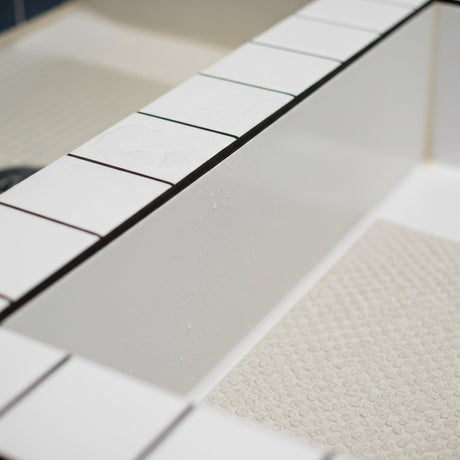

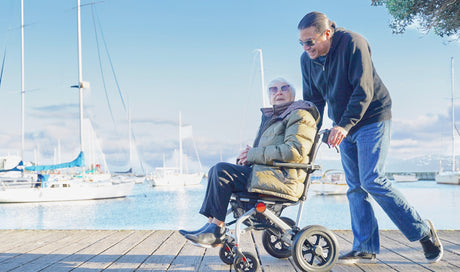
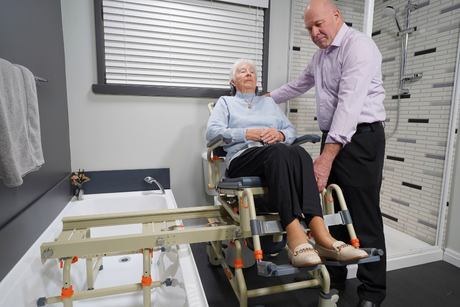
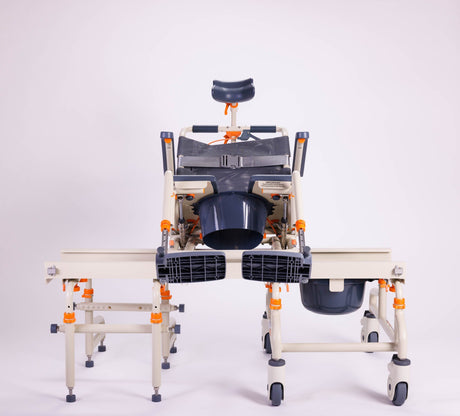
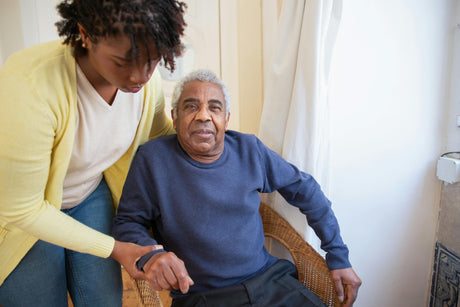
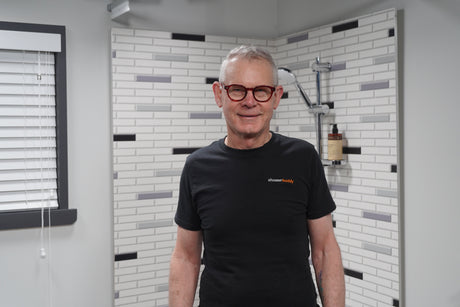
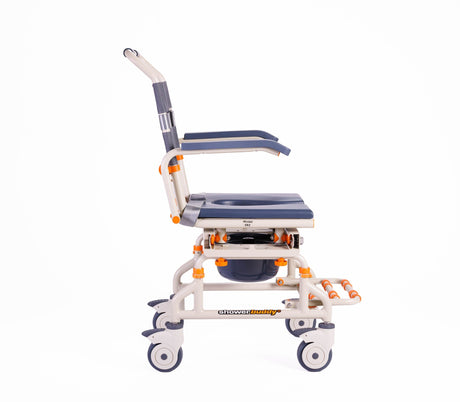
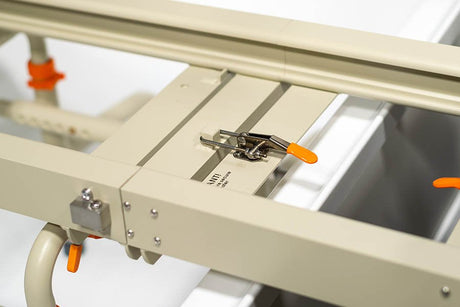

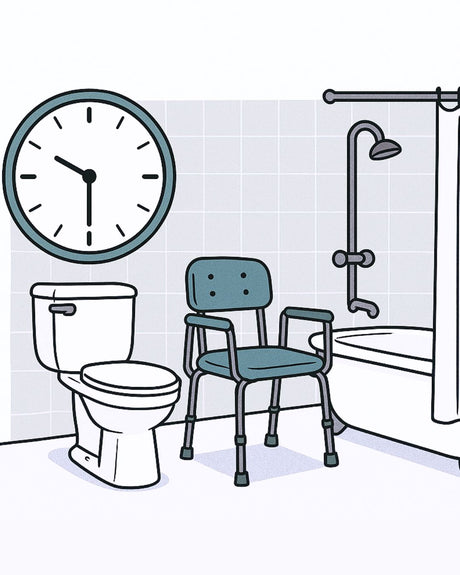
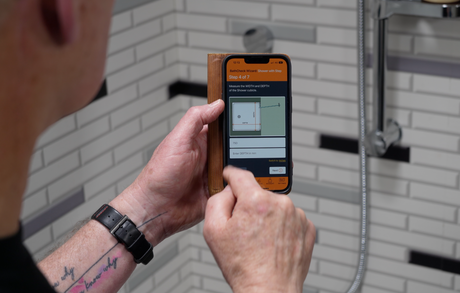
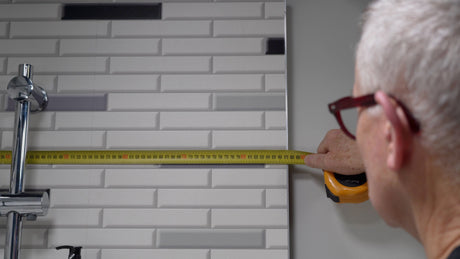
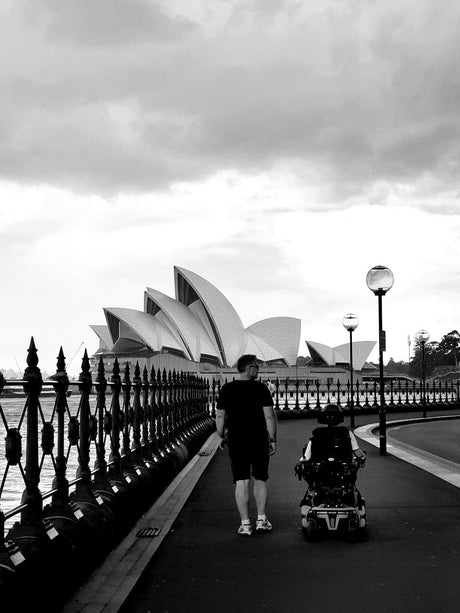
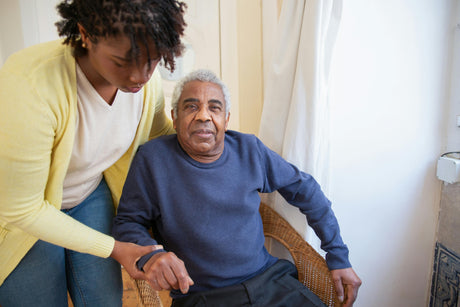
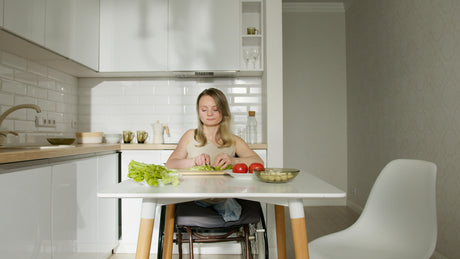
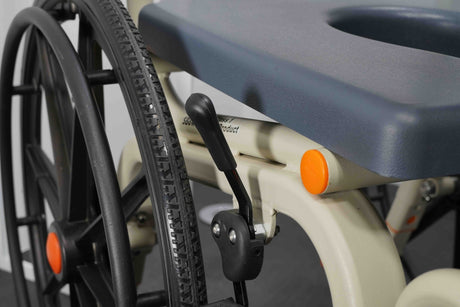


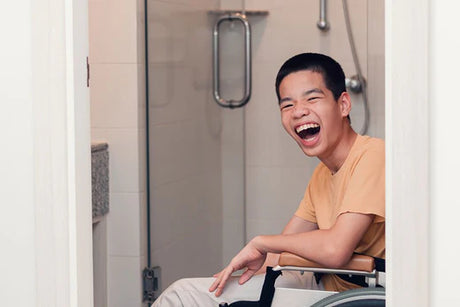
![Toilet Training A Young Child With Mobility Challenges [And How A Shower Chair Can Help]](http://shower-buddy.com/cdn/shop/articles/toilet-training-disabled-child_520x500_a90e5234-d372-435d-aa56-8da15dd3836c.webp?v=1722557239&width=460)

